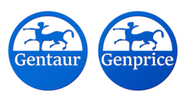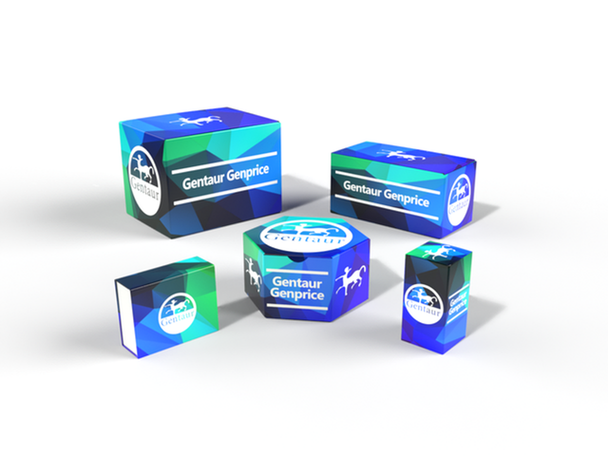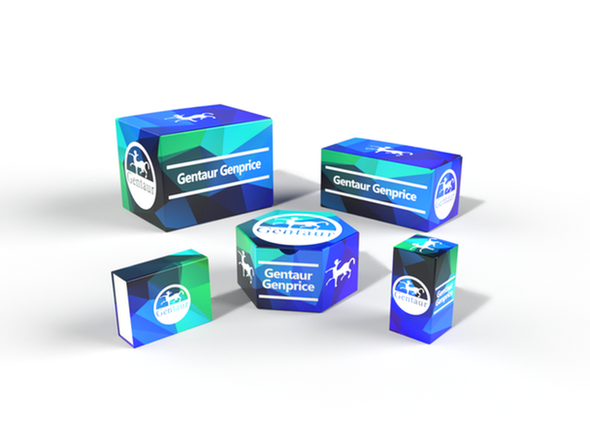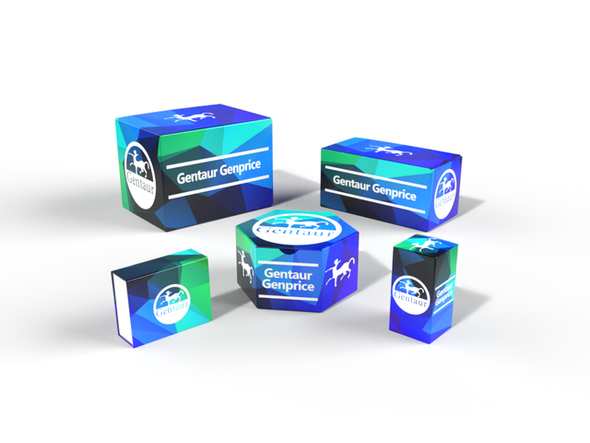Description
CCR8 Antibody | 2097 | Gentaur UK, US & Europe Distribution
Host: Rabbit
Reactivity: Human
Homology: N/A
Immunogen: CCR8 antibody was raised against a 19 amino acid peptide near the center of human CCR8.
The immunogen is located within amino acids 170 - 220 of CCR8.
Research Area: Chemokines & Cytokines, Infectious Disease
Tested Application: E, WB
Application: CCR8 antibody can be used for detection of CCR8 by Western blot 0.5 μg/mL. An approximately 50 kDa band can be detected.
Antibody validated: Western Blot in human samples. All other applications and species not yet tested.
Specificiy: N/A
Positive Control 1: Cat. No. 1306 - Human Spleen Tissue Lysate
Positive Control 2: N/A
Positive Control 3: N/A
Positive Control 4: N/A
Positive Control 5: N/A
Positive Control 6: N/A
Molecular Weight: 50 kDa
Validation: N/A
Isoform: N/A
Purification: CCR8 Antibody is affinity chromatography purified via peptide column.
Clonality: Polyclonal
Clone: N/A
Isotype: IgG
Conjugate: Unconjugated
Physical State: Liquid
Buffer: CCR8 Antibody is supplied in PBS containing 0.02% sodium azide.
Concentration: 1 mg/ml
Storage Condition: CCR8 antibody can be stored at 4˚C for three months and -20˚C, stable for up to one year. As with all antibodies care should be taken to avoid repeated freeze thaw cycles. Antibodies should not be exposed to prolonged high temperatures.
Alternate Name: CCR8 Antibody: CY6, TER1, CCR-8, CKRL1, CDw198, CMKBR8, GPRCY6, CMKBRL2, CC-CKR-8
User Note: Optimal dilutions for each application to be determined by the researcher.
BACKGROUND: CCR8 Antibody: CCR8 is one of the chemokine receptors that are required as coreceptors for HIV infection. The genes encoding human and murine CCR8 were cloned and designated TER1, CKR-L1, and ChemR1. The encoded seven transmembrane protein was identified as the receptor for human CC chemokine I-309 and renamed CCR8. Recently, CCR8 was found to serve as a coreceptor for diverse T-cell tropic, dual-tropic and macrophage-tropic HIV-1 strains. CCR8 mediates CC chemokine I-309 induced monocyte chemoattraction and HIV-1 envelope fusion and virus infection, which can be prevented by the CCR8 ligand I-309. CCR8 is expressed in spleen, thymus and T lymphoblastic cell lines.






